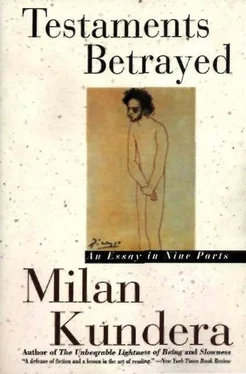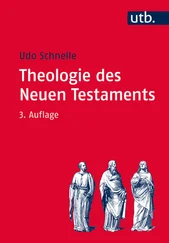That is why the roman a clef (which deals with real people with the intention of making them recognizable beneath fictional names) is a false novel, an aesthetically equivocal thing, morally unclean. Kafka disguised under the name Garta! You object to the
author: "That's not accurate!" The author: "These aren't memoirs I've written; Carta is an imaginary character!" You: "As an imaginary character, he's implausible, badly made, written with no talent!" The author: "But this isn't the usual sort of character; he lets me make new revelations about my friend Kafka!" You: "Inaccurate revelations!" The author: "These aren't memoirs I've written; Carta is an imaginary character!… " And so on.
Of course, every novelist, intentionally or not, draws on his own life; there are entirely invented characters, created out of pure reverie; there are those inspired by a model, sometimes directly, more often indirectly; there are those created from a single detail observed in some person; and all of them owe much to the author's introspection, to his self-knowledge. The work of the imagination transforms these inspirations and observations so thoroughly that the novelist forgets about them. Yet before publishing his book, he must think to hide the keys that might make them detectable; first, out of the minimum of consideration due persons who, to their surprise, will find fragments of their lives in the novel, and second, because keys (true or false) one puts into the reader's hands can only mislead him: instead of unknown aspects of existence, he will be searching a novel for unknown aspects of the author's existence; the entire meaning of the art of the novel will thus be annihilated, as it was annihilated, for instance, by that American professor who, wielding his huge bunch of skeleton keys, wrote the big biography of Hemingway:
Through the force of his interpretation, he turned Hemingway's whole oeuvre into a single roman a clef;
as if it had been turned inside out like a jacket: suddenly, the books are invisible inside, and on the lining outside, a reader avidly observes the (real or alleged) events of the life-trivial, painful, ridiculous, pedestrian, stupid, petty events; thus the work is undone, the imaginary characters are transformed into people from the authors life, and the biographer begins the moral trial of the writer: in one short story there is a wicked mother character: Hemingway is maligning his own mother here; in another story there is a cruel father: it is Hemingway's revenge on his father for allowing his childhood tonsils to be removed without anesthesia; in "Cat in the Rain," the unnamed female character "is dissatisfied with her… self-absorbed, unresponsive husband": this is Hemingways wife Hadley, complaining; the female character of "Summer People" is to be seen as the wife of Dos Passos: Hemingway tried in vain to seduce her and, in the story, he abuses her disgracefully by making love to her in the guise of a character; in Across the River and Into the Trees, an unnamed, very ugly man appears in a bar: Hemingway is describing the ugliness of Sinclair Lewis, who, "bitterly hurt and angered by Hemingway's cruelest passage, died three months after the novel was published." And so on and on, one denunciation after another.
Novelists have always resisted that biographical furor whose representative prototype, according to Proust, is Sainte-Beuve with his motto: "I do not look on literature as a thing apart, or, at least, detachable, from the rest of the man…" Understanding a work therefore requires knowing the man first-that is, Sainte-Beuve specifies, knowing the answers to a cer-
tain number of questions even though they "might seem at the furthest remove from the nature of his writings: What were his religious views? How did he react to the sight of nature? How did he conduct himself in regard to women, in regard to money? Was he rich, was he poor? What governed his actions, what was his daily way of life? What was his vice, or his weakness?" This quasi-police method, Proust comments, requires a critic "to surround himself with every possible piece of information about a writer, to check his letters, to interrogate people who knew him…"
Yet, surrounded as he was "with every possible piece of information," Sainte-Beuve managed not to recognize any of the great writers of his time-not Balzac, nor Stendhal, nor Baudelaire; by studying their lives he inevitably missed their work, because, said Proust, "a book is the product of a self other than the self we manifest in our habits, in our social life, in our vices'; "the writers true self is manifested in his books alone."
Proust's polemic against Sainte-Beuve is of fundamental importance. Let us make clear: Proust is not criticizing Sainte-Beuve for exaggerating; he is not decrying the limitations of Sainte-Beuve's method; his verdict is absolute: that method is blind to the author's other self; blind to his aesthetic wishes; incompatible with art; directed against art; inspired by hatred of art.
In France, Kafka's work is published in four volumes. The second volume: stories and narrative fragments;
that is: everything Kafka published in his lifetime, plus everything found in his desk drawers: unpublished and incomplete stories, drafts, false starts, rejected or abandoned versions. What order should it all have? The editor applied two principles: (1) with no distinction as to their nature, genre, or degree of completion, all the narrative writings are set on an equal plane and (2) arranged in chronological order, that is, in the order of their birth.
This is why none of the three collections of stories Kafka himself put together for publication ( Meditations , A Country Doctor, A Hunger Artist) is presented here in France in the form Kafka gave them; these collections have simply disappeared; the individual stories constituting them are scattered among other things (among drafts, fragments, and such) by chronology; thus eight hundred pages of Kafka's writings become a flood where everything dissolves into everything else, a flood formless as only water can be, water that flows and carries along with it both good and bad, finished and unfinished, strong and weak, draft and work.
Brod had already proclaimed the "fanatical veneration" with which he surrounded each of Kafka's words. The editors of Kafka's work show the same absolute veneration for everything their author touched. But understand the mystery of absolute veneration: it is also, and inevitably, the absolute denial of the author's aesthetic wishes. For aesthetic wishes show not only by what an author has written but also by what he has deleted. Deleting a paragraph calls for even more talent, cultivation, and creative power than writing it does. Therefore, publishing what the author deleted is
the same act of rape as censoring what he decided to retain.
What obtains for deletions within the microcosm of a particular work also obtains for deletions within the macrocosm of a complete body of work. There too, as he assesses his work, and guided by his aesthetic requirements, the author often excludes what doesn't satisfy him. Claude Simon, for instance, no longer allows his earliest books to be reprinted. Faulkner explicitly stated his wish to leave no trace "but the printed books," in other words, none of what the garbage-can scavengers would find after his death. He thus made the same request as Kafka, and he was obeyed the same way: they published everything they could dig up. I purchase Seiji Ozawa's recording of Mahler's First Symphony. This four-movement symphony originally had five movements, but after the premiere Mahler definitively removed the second, which is not to be found in any printed score. Ozawa put it back into the symphony; so now absolutely everyone can see that Mahler was right to delete it. Need I go on? The list is endless.
Читать дальше












